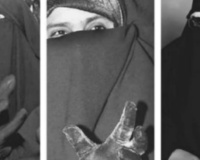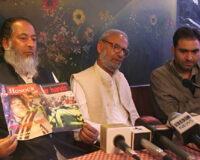For many in Kashmir, journalists are considered the last line of ‘defense’ for representing the actual reality of ground in the valley. A community of more than 300 journalists in Srinagar who are somehow managing to survive are struggling to keep journalism relevant in Kashmir. The new ‘Media Policy’ in 2020, to be implemented by the Department of Information and Public Relations (DIPR) is one among the many tools used by the Indian state in Kashmir to control any type of content that is critical of government and the brazen human rights violations in the valley. As one journalist argues, “everyone has learned to work in the self-censorship mode. Journalists are trying to save their lives at the cost of their credibility.” The number of incidents of violence against journalists in occupied Kashmir is staggering. Since 1990, 19 journalists have been killed in Jammu and Kashmir.
Following the unilateral, illegal abrogation of Article 370 and Article 35-A of the Indian Constitution, which provided limited autonomy to the state and the downgrading of the former state into two federally governed union territories on Aug. 5, 2019, journalists have been harassed, intimidated and detained under counter-terrorism laws irrespective of their organizations or experience. The Indian authorities are using the same legal instruments against journalists which were used against political activists in the valley to silence and facilitate abuses like: a) Unlawful Activities (Prevention) Act 1967; b) Jammu and Kashmir Public Safety Act 1978; c) The Armed Forces (Jammu and Kashmir) Special Powers Act 1990 (AFSPA); d) Global War on Terror (GWOT) rhetoric.
LFK and SWI-unit has documented cases of human rights lawyers and practitioners being subject to home/office raids, disruption of normal workflow, arrest while on fieldwork or malicious confiscation of travel documents to prevent legitimate journalism or human rights work. We saw, only, in 2019, J&K experienced heightened disconnection of high-speed internet, including of mobile phone signal infrastructure for 18 months. In 2020, India restricted the internet some 109 times. According to LFK’s findings, Tahir Ashraf Bhatti is the head of the Counter Insurgent unit, where he summoned many journalists and harassed them for purely reporting on events in Kashmir. The current head of the cyber cell is Syed Sleet Shah, who recently was recruiting “serious candidates” for a special cyber project via her personal twitter account. This has become a norm and many social media users in Kashmir has stopped using their social media and even if they are using, they are absolutely silent in matters of politics and political changes happening in the valley.
In this part of the briefing, we explore some selected cases which display how journalists and Human Rights defenders are persecuted for doing their professional work.
It appears that the Indian authorities are running a strategy to disrupt, detain and punish those engaging in reasonable journalism and human rights advocacy—particularly against those who have the capability to document rights violations and report newsworthy incidents to the global arena. In light of this, the Indian authorities must recognise the work of journalists and human rights defenders. There needs to be an urgent review of the use of UAPA /PSA to align its laws with India’s obligations under international law — in particular international human rights law.
Halting India’s disingenuous application of counter-terrorism is urgently required. It must be questioned — even if a state is running a censorship strategy — why there is a preference for using a counter-terrorism framework to disrupt, detain and punish media and human rights professionals? Such a strategy is questionable at best and triggers many legal questions over the motives of such a security law.






